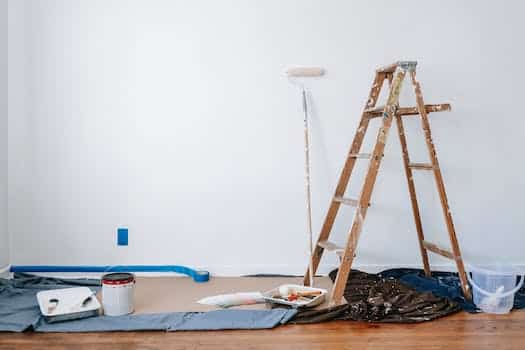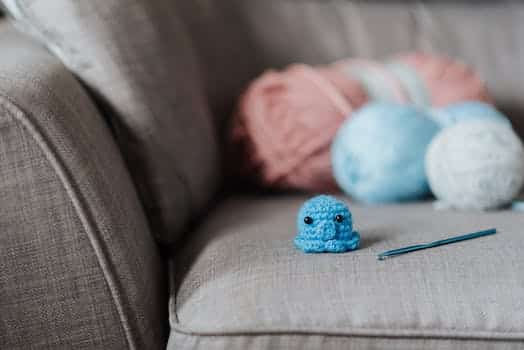Painting furniture can be a fun and cost-effective way to give your old pieces a fresh new look. However, achieving a professional finish can be tricky without the right techniques. In this article, we’ll share 10 tips to help you paint furniture like a pro and achieve a high-quality finish that will last for years to come.
- 1. Painting Furniture Tips
- 1.1. Choosing the Right Paint
- 1.2. Preparing Your Furniture
- 1.3. Sanding and Priming
- 1.4. Applying the Paint
- 1.5. Finishing Touches
- 2. Choosing the Right Paint
- 2.1. Oil-based vs. Water-based Paints
- 2.2. Gloss, Satin, or Matte Finish
- 2.3. Color Selection
- 2.4. Quality of the Paint
- 2.5. Quantity of Paint Needed
- 3. Preparing Your Furniture
- 3.1. Cleaning the Furniture
- 3.2. Removing Old Paint or Stain
- 3.3. Filling in Cracks and Holes
- 3.4. Sand the Furniture
- 3.5. Wipe Down the Furniture
- 4. Sanding and Priming
- 4.1. Sanding the Furniture
- 4.2. Choosing the Right Primer
- 4.3. Applying the Primer
- 4.4. Waiting for the Primer to Dry
- 4.5. Sanding Again
- 5. Applying the Paint
- 5.1. Choosing the Right Brush or Roller
- 5.2. Applying the First Coat of Paint
- 5.3. Waiting for the Paint to Dry
- 5.4. Applying the Second Coat of Paint
- 5.5. Letting the Paint Cure
- 6. Finishing Touches
1. Painting Furniture Tips
Painting furniture can be a great way to update the look of a room without spending a lot of money. However, if you want your painted furniture to look professional and polished, there are a few tips you should keep in mind. Here are 10 tips for painting furniture that will help you achieve a professional look:
1. Clean the surface of your furniture thoroughly before you begin painting. Use a mild detergent and water to remove any dirt, dust, or grime.
2. Sand the surface of your furniture lightly with fine-grit sandpaper to create a smooth surface for the paint to adhere to.
3. Apply a layer of primer to your furniture before you begin painting. This will help the paint adhere better and create a smoother finish.
4. Use a high-quality paintbrush to apply your paint. A good brush will help you achieve a smooth, even finish.
5. Use long, even strokes when painting your furniture. This will help you avoid brush marks and create a more polished look.
6. Allow each coat of paint to dry completely before applying the next coat.
7. Sand lightly between coats of paint to create a smooth surface.
8. Apply a clear coat of sealer or wax to protect your painted furniture from scratches and wear.
9. Don’t rush the painting process. Take your time and allow each coat of paint to dry thoroughly before moving on to the next step.
10. Finally, be patient. The key to achieving a professional look when painting furniture is taking your time and paying attention to the details.
1.1. Choosing the Right Paint
Choosing the Right Paint:
When it comes to painting furniture, choosing the right paint is crucial for achieving a professional look. You’ll want to choose a paint that is durable, provides good coverage, and is easy to work with. Here are some options to consider:
1. Chalk paint: Chalk paint is a popular choice for furniture painting because it requires minimal prep work and can be used on a variety of surfaces without the need for a primer. It also creates a matte, velvety finish.
2. Milk paint: Milk paint is an eco-friendly option that is made from natural ingredients like milk protein, lime, and clay. It creates a unique, matte finish that can be distressed for a vintage look.
3. Oil-based paint: Oil-based paint is a more traditional option that provides a durable, glossy finish. It does require more prep work, including sanding and priming, but the end result is worth it.
No matter which paint you choose, make sure to follow the manufacturer’s instructions and allow ample drying time before adding additional coats or using the furniture.
1.2. Preparing Your Furniture
Before you start painting your furniture, it’s important to properly prepare it. Clean the piece thoroughly to remove any dirt, dust, or grime. Sand the surface to create a smooth base for the paint to adhere to. Fill in any cracks or holes with wood filler and sand again once it’s dry. Finally, wipe down the furniture with a damp cloth to remove any remaining dust or debris.
1.3. Sanding and Priming
Before painting any piece of furniture, it is important to sand and prime it properly. Sanding helps to create a smooth surface for the paint to adhere to, while priming helps to ensure that the paint will stick and last longer. Start by sanding the entire piece of furniture with medium-grit sandpaper, making sure to remove any bumps or rough spots. Next, use a fine-grit sandpaper to smooth out the surface even further. Once the sanding is complete, wipe down the furniture with a damp cloth to remove any dust or debris. Finally, apply a coat of primer to the entire piece, using a brush or roller. Allow the primer to dry completely before moving on to the painting step.
1.4. Applying the Paint
Applying the paint is the most important step in achieving a professional look for your painted furniture. It is essential to use a good quality paintbrush or sprayer that will provide even coverage and avoid drips or brush marks. Start by applying a thin coat of paint and allow it to dry completely before applying a second coat. It is also important to follow the manufacturer’s instructions when it comes to drying time and recommended number of coats. Don’t rush the process and take your time to ensure that each coat is applied evenly and smoothly.
1.5. Finishing Touches
After you have completed the painting process, it is important to add some finishing touches to your furniture to give it a professional look. One of the simplest ways to do this is by sanding the edges of the furniture. This will give the piece a distressed look which is very popular these days. You can also add a layer of wax or sealant to protect the paint and give it a shiny finish. Another popular technique is to use stencils to create designs on the furniture. This can be a great way to add some personality and style to your piece. Finally, you can also add some hardware or embellishments to your furniture to give it a unique touch.
2. Choosing the Right Paint
Choosing the right paint is crucial when painting furniture. Different types of paint have different finishes and durability, and choosing the wrong one can result in a less professional-looking finish that may not last as long. Consider the type of furniture you are painting and where it will be used. For example, if it will be exposed to a lot of wear and tear, you may want to choose a more durable paint. Additionally, consider the color and finish you want. You may want a glossy finish or a more subdued matte finish. Take the time to research and choose the right paint for your project to ensure the best results.
2.1. Oil-based vs. Water-based Paints
When it comes to choosing the right paint for your furniture, one important consideration is whether to use oil-based or water-based paints. Oil-based paints are known for their durability and ability to create a smooth, glossy finish, but they can also be more difficult to work with and have a strong odor. Water-based paints, on the other hand, are easier to clean up and have less odor, but may not be as durable or provide as high of a gloss finish. Ultimately, the choice between oil-based and water-based paints will depend on your personal preference and the specific needs of your project.
2.2. Gloss, Satin, or Matte Finish
When choosing the right paint for your furniture, one important decision to make is the finish. Gloss, satin, and matte finishes each have their own unique qualities and can give your furniture a different look and feel. Gloss finishes are shiny and reflective, making them a good choice for modern or contemporary furniture. Satin finishes have a slight sheen and offer a more elegant and sophisticated look. Matte finishes are non-reflective and give furniture a more natural and organic feel. Consider the style and purpose of your furniture when choosing the finish that will work best for your project.
2.3. Color Selection
When it comes to painting furniture, choosing the right color is just as important as choosing the right paint. The color you choose can set the tone for the entire room and can even affect the mood of the people in it. When selecting a color, consider the style of the furniture, the overall decor of the room, and the amount of natural light in the space. If you’re unsure, neutral colors like white, gray, or beige are always a safe bet. Additionally, consider using accent colors to add depth and interest to the piece. By taking the time to choose the right color, you can ensure that your painted furniture looks professional and polished.
2.4. Quality of the Paint
One of the most important factors to consider when choosing paint for furniture is the quality of the paint. High-quality paint will not only provide a better finish, but it will also last longer and be more durable. Look for paint that is specifically designed for furniture, as this will have better adhesion and provide a smoother finish. It is also important to consider the color and sheen of the paint, as this will impact the final look of the furniture. When in doubt, opt for a matte or satin finish for a more professional appearance.
2.5. Quantity of Paint Needed
When it comes to painting furniture, one of the most important things to consider is the quantity of paint needed for the project. This will depend on the size of the piece of furniture, as well as the type of paint you choose to use. It’s always a good idea to purchase slightly more paint than you think you’ll need, just to be on the safe side. That way, you won’t run out of paint halfway through the project and have to make an emergency trip to the store.
3. Preparing Your Furniture
Before you start painting your furniture, it is important to prepare it properly. This involves cleaning the surface thoroughly and removing any old paint or finish. Sanding the surface will also help the paint adhere better. Make sure to fill in any cracks or holes with wood filler and let it dry completely before painting. Cover the floor and surrounding area with a drop cloth or newspaper to protect it from paint splatters. Lastly, choose the appropriate type of paint for your furniture and apply it evenly with a good quality paintbrush or sprayer.
3.1. Cleaning the Furniture
Before you start painting your furniture, it’s important to properly clean it. Use a gentle cleaner and a soft cloth to remove any dirt, dust, or grime. Pay special attention to any areas with built-up grime or residue, as these can affect the finish of your paint. Once your furniture is clean and dry, you can move on to prepping it for painting.
3.2. Removing Old Paint or Stain
Before you can begin painting furniture, you need to properly prepare the surface by removing any old paint or stain. This is an important step in ensuring that your final product looks professional and lasts for a long time. There are a few different methods you can use to remove old paint or stain, including sanding, using a chemical stripper, or using a heat gun. Each method has its own advantages and disadvantages, so it’s important to choose the one that’s right for your specific project. Regardless of which method you choose, make sure to wear protective gear and work in a well-ventilated area to avoid any health hazards.
3.3. Filling in Cracks and Holes
Before you start painting your furniture, it’s important to properly prepare the surface. One step in this process is filling in any cracks or holes in the wood. This not only helps to create a smoother surface for painting, but also ensures that the furniture will be structurally sound. Use a wood filler or putty to fill in any holes or cracks, and sand the surface smooth once it has dried. This will ensure that your painted furniture looks professional and lasts for years to come.
3.4. Sand the Furniture
Before painting your furniture, it’s important to properly prepare it by sanding it down. Sanding will help remove any old paint, stains or varnish, and will create a smooth surface for the new paint to adhere to. Start by using a coarse grit sandpaper to remove the top layer of the old finish. Then, switch to a finer grit sandpaper to smooth out any rough spots and create an even surface. Be sure to sand in the direction of the grain for the best results. Once you’ve finished sanding, wipe down the furniture with a damp cloth to remove any dust or debris.
3.5. Wipe Down the Furniture
Before you start painting your furniture, it’s important to properly prepare it. One important step is to wipe down the furniture to remove any dirt or grime. You can use a damp cloth or a gentle cleaner, but make sure to thoroughly dry the furniture afterwards to prevent any moisture from interfering with the painting process.
4. Sanding and Priming
Before painting your furniture, it is important to properly sand and prime the surface. Sanding helps to create a smooth and even base for the paint to adhere to, while priming helps to seal the surface and prevent stains or bleed-through from the original finish. Use a fine-grit sandpaper to sand the entire surface, and make sure to wipe away any dust with a tack cloth before priming. Choose a high-quality primer that is appropriate for the type of furniture you are painting, and apply it evenly with a brush or roller. Allow the primer to dry completely before moving on to painting.
4.1. Sanding the Furniture
Before you start painting your furniture, it is important to properly sand and prime the surface. Sanding removes any existing finishes, smoothens out any imperfections, and helps the paint adhere better. Start by using a coarse grit sandpaper and gradually work your way towards a finer grit. After sanding, wipe down the furniture with a damp cloth to remove any dust. Next, apply a coat of primer to ensure that the paint adheres smoothly and evenly. Allow the primer to dry completely before moving on to painting.
4.2. Choosing the Right Primer
When it comes to painting furniture, choosing the right primer is just as important as the paint itself. A good primer can help hide imperfections, create a smooth surface for the paint to adhere to, and even improve the durability of the finished product. But with so many primer options out there, how do you know which one to choose? Here are some things to consider:
– Type of surface: Different primers are designed for different surfaces. Make sure you choose a primer that is compatible with the material you’re working with. For example, if you’re painting a piece of furniture made of metal, you’ll need a primer that is formulated for metal.
– Color: If you’re painting your furniture a dark color, you’ll want to choose a primer that is tinted to match. This will help ensure that the final color looks even and vibrant.
– Purpose: Some primers are designed to block stains or odors, while others are formulated to improve adhesion or prevent rust. Consider what you need your primer to do before making a choice.
Taking the time to choose the right primer can make a big difference in the final result of your furniture painting project.
4.3. Applying the Primer
Before applying the primer, it is important to clean the furniture thoroughly. Use a damp cloth to wipe away any dust or debris. Once the furniture is clean, you can begin to apply the primer. Use a paintbrush or roller to apply the primer in even strokes, covering the entire surface of the furniture. Allow the primer to dry completely before moving on to the next step of sanding.
4.4. Waiting for the Primer to Dry
Once you have applied the primer to your furniture, it is important to wait for it to dry completely before moving on to the next step. This can take anywhere from a few hours to overnight, depending on the type of primer you used and the humidity in the air. It is important to be patient and not rush this step, as painting over wet or tacky primer can ruin the finish of your furniture. While you wait for the primer to dry, you can begin preparing your workspace for the next step of sanding and priming.
4.5. Sanding Again
Before applying paint, it is important to sand the furniture surface again. This will ensure that any remaining uneven areas or rough spots are smoothed out, creating a clean and polished surface for the paint to adhere to. Use a fine-grit sandpaper and sand in the direction of the wood grain. Once sanding is complete, wipe down the surface with a tack cloth to remove any dust or debris. After sanding, it is important to prime the furniture to create a base layer that will help the paint adhere and last longer. Choose a primer that is appropriate for the type of paint you will be using and apply a thin, even coat across the entire surface of the furniture. Allow the primer to dry completely before moving on to painting.
5. Applying the Paint
When applying paint to furniture, it’s important to use smooth, even strokes. Begin by applying a thin coat of paint in the direction of the wood grain, using a brush or roller. Allow the first coat to dry completely before applying a second coat. If necessary, lightly sand the first coat before applying the second. For a professional, smooth finish, always use high-quality paint and tools. Consider using a paint sprayer for larger pieces of furniture to achieve an even finish. Don’t forget to paint the edges and hard-to-reach areas for a polished look.
5.1. Choosing the Right Brush or Roller
Choosing the right brush or roller is crucial to achieving a professional look when painting furniture. A high-quality brush or roller will ensure even coverage and minimize brush strokes or roller marks. When selecting a brush, consider the size and shape of the furniture piece, as well as the type of paint being used. For larger surfaces, a wider brush will be more efficient, while a smaller brush will be necessary for detailed areas. Synthetic brushes are best for latex paints, while natural bristle brushes work well with oil-based paints. When choosing a roller, consider the texture of the furniture piece. For a smooth surface, use a foam roller, while a textured surface will require a nap roller. Always remember to clean your brushes and rollers thoroughly after use to ensure their longevity.
5.2. Applying the First Coat of Paint
Applying the first coat of paint is a crucial step in achieving a professional look for your painted furniture. Before beginning, make sure your work area is well-ventilated and your furniture is clean and dry. Use a high-quality brush or roller to apply an even coat of paint, working from top to bottom and overlapping each stroke slightly. Be sure to follow the manufacturer’s recommended drying time before applying a second coat or any additional finishing touches.
5.3. Waiting for the Paint to Dry
Waiting for the paint to dry is an essential step in achieving a professional look when painting furniture. Rushing this step can result in smudging, uneven texture, and a generally unsatisfactory finish. It’s important to allow ample time for each coat of paint to dry completely before moving on to the next step. Depending on the type of paint and the humidity of the environment, this can take anywhere from a few hours to a full day. Patience is key when it comes to achieving a flawless finish on your furniture.
5.4. Applying the Second Coat of Paint
Applying a second coat of paint is crucial for achieving a professional look on your painted furniture. Once the first coat has dried completely, lightly sand the surface with a fine-grit sandpaper to remove any imperfections. Wipe the surface clean with a tack cloth and then apply the second coat of paint in the same manner as the first. Make sure to use long, smooth strokes and avoid overworking the paint. Allow the second coat to dry completely before moving on to any finishing touches.
5.5. Letting the Paint Cure
After applying the final coat of paint, it is important to let the paint cure before using or moving the furniture. This allows the paint to fully dry and harden, ensuring a durable and long-lasting finish. Depending on the type of paint used and the humidity and temperature of the environment, curing time can vary. It is generally recommended to wait at least 24 hours before handling the furniture, and up to a week before placing any heavy objects on it. Be patient and resist the temptation to rush the process, as this can result in a subpar finish and wasted effort.
6. Finishing Touches
Once you have completed painting your furniture piece, there are a few finishing touches you can add to give it a truly professional look. One option is to distress the edges of the piece using sandpaper, giving it a vintage or shabby chic feel. Another option is to apply a coat of wax or polyurethane to protect the paint and give it a smooth finish. You can also add new hardware or knobs to update the look of the piece and make it truly unique. And finally, take a step back and assess the overall appearance of the piece. If there are any areas that need touch-ups or additional coats of paint, now is the time to do so. With these finishing touches, your painted furniture will look like it was done by a professional.
6.1. Adding a Protective Coat
Adding a protective coat is the final step in achieving a professional finish for your painted furniture. Not only does it add a layer of durability, but it can also enhance the overall appearance of the piece. There are several types of protective coats to choose from, including wax, polyurethane, and varnish. It’s important to choose the right type of protective coat based on the type of paint used and the intended use of the furniture. Applying the protective coat is a simple process that can be done with a brush or a spray gun. It’s recommended to apply at least two coats for maximum protection.
6.2. Polishing the Furniture
Polishing the furniture is an important step in achieving a professional and polished look. After the paint has dried completely, use a clean, dry cloth to gently buff the surface of the furniture. This will remove any dust particles or imperfections that may have settled on the surface. For an extra shiny finish, apply a furniture wax or polish and buff with a soft cloth. This will not only enhance the appearance of the furniture but also protect it from wear and tear.
6.3. Adding New Hardware
When painting furniture, adding new hardware can be a great way to give your piece a fresh, updated look. Consider replacing old, worn-out hardware with new knobs, handles, or pulls that complement the color and style of your newly painted furniture. You can find a wide variety of hardware options at your local home improvement store or online. Make sure to measure the distance between screw holes on your furniture so that you purchase hardware that fits properly. Installing new hardware is a simple and affordable way to add the finishing touches to your painted furniture project.
6.4. Reattaching Doors and Drawers
One of the final steps in painting furniture is reattaching any doors and drawers. Make sure all surfaces are dry and clean before reattaching. Use a screwdriver to secure any screws or hinges and test the movement of the doors and drawers to ensure they are properly aligned and functioning. This finishing touch will give your painted furniture a professional and polished look.
6.5. Placing Furniture in a Safe Area
When it comes to placing furniture in your home, safety should always be a top priority. Start by making sure that heavy pieces, such as bookcases and dressers, are securely anchored to the wall to prevent them from tipping over. Keep furniture away from heating vents or radiators to avoid fire hazards. It’s also important to arrange furniture in a way that allows for easy movement and access to exits in case of an emergency.
Conclusion
By following these 10 painting furniture tips, you can achieve a professional and polished look for your furniture. Take your time, prepare properly, and use quality materials to ensure a long-lasting finish that will impress.






These 10 innovative and imaginative DIY home decor ideas from [object Object] provide a refreshing approach to enhancing ones living…